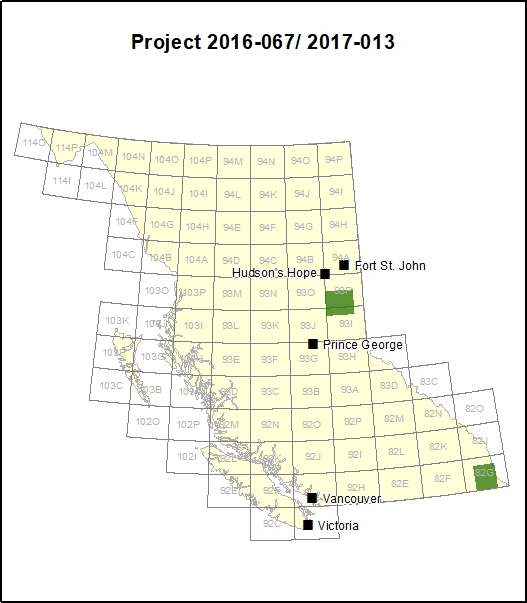Summary
This project is refining a new water-based process for cleaning metallurgical coal samples prior to coke quality assessment.
For information on Phase 1 of this project, visit https://www.geosciencebc.com/s/2016-067.asp

This project is refining a new water-based process for cleaning metallurgical coal samples prior to coke quality assessment.
For information on Phase 1 of this project, visit https://www.geosciencebc.com/s/2016-067.asp

Coal is BC’s largest export commodity. In 2018, metallurgical and thermal coal production generated $6.31 billion dollars for BC. (view report). Innovative technologies are needed to help the sector maintain its international competitveness.
Samples of metallurgical coal — used to make coke, an essential ingredient in steel production — are ‘washed’ before quality testing in the laboratory. Coal from BC’s coal mines contains ash which must be removed to produce a clean sample for accurate coal and coke quality characterization. This step in the analysis process is vital to accurately assess the economic value of a deposit and must be reliable.Currently, coal samples are analyzed using the float/sink method which uses organic liquids such as white spirit, perchloroethylene (PCE) and methylene bromide. This can have a negative effect on testing coking coal quality and potentially expose laboratory technicians to carcinogenic materials.An alternative and effective water-based washing method that could provide comparable results to that from an industrial coal-washing plant would remove the need to use organic liquids in the process, along with associated health and environmental risks.
To determine if the water-based ‘Roben Jig’ (also known as ‘Boner Jig’) process can be used to wash a broad range of coal types found in BC coal fields to an equivalent or superior standard to traditional methods.
The main benefit of washing coal samples using the water-based Roben Jig is to decrease the safety risk associated with the handling and use of organic liquids such as PCE. PCE is a known carcinogen and poses a safety hazard for laboratory operators who must handle the chemicals carefully to avoid exposure.
Investigations have also found that PCE can influence the properties of the coal to be tested, reducing the reliability of the test, and perhaps leading to over- or under-valuing of a potential coal deposit.
Raw coal samples tested in Phase I of this project were collected from coalfields in northeast BC, between Prince George and Fort St John, and in southeast BC, east of Cranbrook.
Phase 2 of the research project used raw and clean coal from a single-seam plant run from a BC coal deposit being actively mined. Since the traditional and new methodologies were tested on samples from a single seam, this has allowed for a more accurate, direct, comparison.
This project evaluated clean coal products resulting from various methods of washing coal: traditional organic liquids float/sink, Roben Jig separation, and re-jigging of samples previously jigged. The traditional float/sink method uses liquids of different densities to separate the particles of the coal sample, whereas the Roben Jig is a device that allows the sorting of coal particles based on density to occur as the coal is jigged up and down in a column of water.
In this second phase of the project, three additional methods were tested: re-jigging, float-and-sink using an alternative engineered liquid (Novec 7000) and jigging separate size fractions. The clean coal samples produced were compared and the basic coal quality parameters assessed.
For each of the samples tested during both phases of the project, the Roben Jig was able to clean the coal to create a sample that offered the same or more realistic measures of the coal quality characteristics when compared to the float-and-sink-based sample, without exposing laboratory workers to harmful chemicals.
In phase one, it was found that higher ash particles did contaminate lower density slices in the jig, but it is unknown if this misplaced material impacted coke quality.The second phase of the project found that the ash value of the clean coal from the jig was higher than that from the float-and-sink method, but only because of limitations on cut-points imposed by the methodology. Misplaced material was found in clean-coal composites created in the jig, but in small enough proportions that it did not have a negative effect the clean-coal quality. A re-jigging action was found to be the most useful in reducing the percentage of misplaced particles.
Testing the Roben Jig Process
– by Geoscience BC
Copyright held by Geoscience BC. Please credit Geoscience BC when using this movie.